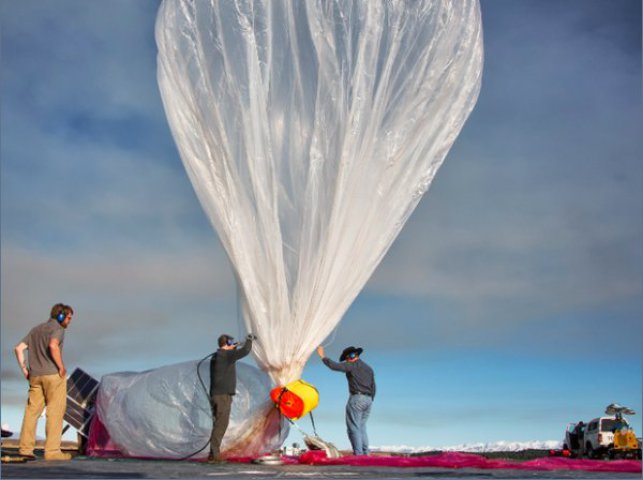Internet by balloon

In Indonesia, Google has partnered with three telephone operators to test a system using air balloons as Internet relays in 2016. The aim is to connect two thirds of the country's 250 million inhabitants who currently do not have access to the Internet.
The "Loon" project consists in deploying a fleet of air balloons in the stratosphere, far above airliners and bad weather, and to use them as relays between the areas that have Internet access and those that do not. Each balloon draws its energy from solar panels used to power the relay antenna they carry. Each balloon should, in theory, provide Internet access across an area of 1,250 km² around it.
These 12m-tall air balloons measuring 15m in diameter are comprised of an inflatable polyethylene envelope which enables them to stay in the atmosphere for around 100 days. Below the envelope is a small box containing the on-board electronic components: the circuit boards that control the system, the radio antennas (which enable communications with the antennas on the ground) and lithium-ion batteries in which solar energy can be stored to enable the system to function through nights.
Finally, the balloon's electronics are powered by solar panels, flexible plastic laminates supported by a light aluminium frame, which are comprised of high-yield monocrystalline solar cells.
Initial small-scale tests have successfully been carried out in 2013 in New Zealand, Latin America and Australia.
The government of Sri Lanka recently announced an agreement to use this project to become the region's first country to have full Internet coverage over its entire territory.
More information
www.google.com/loon/





